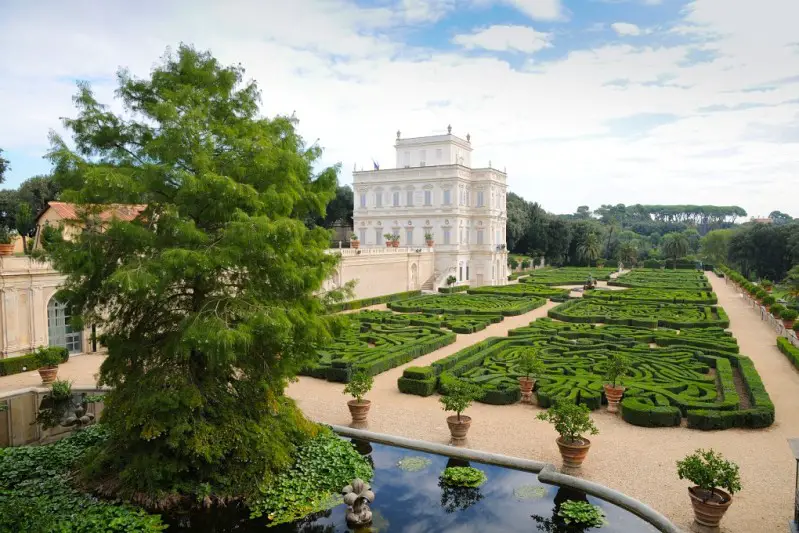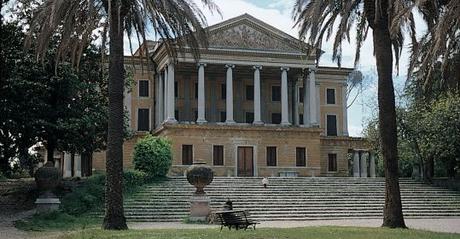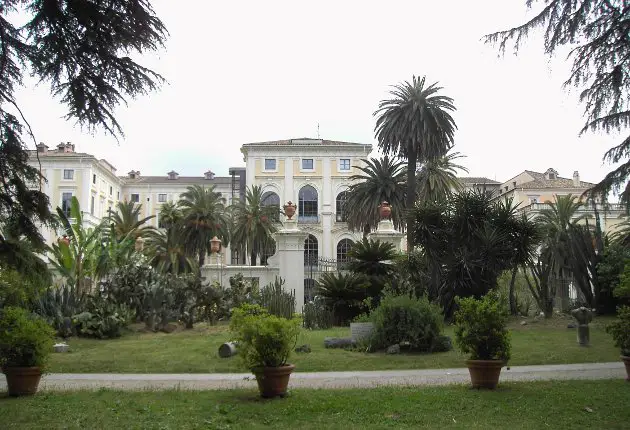Enchanting landscaped grounds and public parks to get away from the chaos of Rome
When visiting Rome, often visiting parks don’t come to mind for the itinerary. But some of Romes most beautiful villas, do in fact have some of the most enchanting landscaped grounds and public parks, with their large verdant spaces, gardens, lakes and architectures. All offering a perfect place to get away from the crowds, noise and smog.
Romans love to take long walks across the city’s parks, both with family and friends, and often running through the gardens with their faithful dogs. During the weekend or summer months, these hidden gem locations are the prime spots to have picnics in the fresh open air. So on your next visit to Rome, take a break from the traditional tourist attractions…after all, a famous proverb says: “When in Rome, do as the Romans do”! Here are just a few highlight locations.

Villa Doria Pamphilj and the Maze Garden is the largest landscaped public park in Rome. It has existed since 1630, when it was purchased by Panfilo Pamphilj. Always becoming more and more stunning thanks to the wonderful works that the Pamphilj family dedicate to it. The park begins in Via della Nocetta, and expand itself to the Gianicolo neighborhood. Once you enter the grounds, you believe to be out of the city, thanks to its old fountains and statues, the amazing villa and the landscape gardens. Visit: www.villapamphili.it

Villa Ada is the second largest urban park in the Capital by size, and it is a rare natural beauty space where to spend time enjoying all of the benefits of fresh air. Villa Ada is the richest park in Rome from the standpoint of the fauna and the environment. While known for its cypresses, pines and dwarf palm trees, it also has a roller-skating track and facilities for jogging and physical exercise, making it one of the most loved and visited parks of Romans. Visit: www.villaada.org

Villa Borghese is a real green gem in the north of the city. With its lush open spaces, fountains, monuments, lakes and gardens, it extends itself almost entirely in the Pinciano district, close to the Aurelian Walls. Owned by the Borghese family since the end of the sixteenth century, the structure has seen several expansions to become the wonder that it is today. Open to the public since 1903, it features as many as 9 entrances to the grounds. Designed in a naturalistic English manner in Rome, it currently presents a number of buildings, museums and attractions. It is the third largest public park in Rome after Villa Doria Pamphilij and Villa Ada. Villa Borghese remains one of Rome’s abiding pleasures and attractions for Romans and visitors alike. Being ideal venue for musical concerts, there are many throughout the summer season. Visit: www.galleriaborghese.it/borghese/en/evilla.htm

Not to be missed is a walk in Villa Torlonia, about two kilometres from Porta Pia. Bought in 1797 by Giovanni Torlonia and subsequently transformed into a monumental complex, it came into the news and into history as “Mussolini’s house”. Inside the Villa, you can admire the lemon-house and the Liberty architecture of the Casina delle Civette (the Owl house). Today it looks like a stunning space characterized by different styles, both classical and modern. During your walk through the boulevards of this beautiful relaxing oasis, you can find little lakes, shadow spaces, grass stretches and delightful corners where take the most memorable pictures. Visit: http://en.museivillatorlonia.it/

Botanical Garden, is full of history and green, and is big enough to agreeably get lost. It is located at the foundations of the Gianicolo, in the ancient park of Villa Corsini, where once lived the Queen Christina of Sweden, and now it is part of the Department of Environmental Biology University of La Sapienza. Rome’s botanic gardens are among the most important in Italy, not only for scientific reasons but also for the methods used to cultivate the plants and the settings which have been recreated to help give visitors an idea of their original natural environments. Botanical Garden has an area of 12 hectares, and houses over 3000 species of plants including palms, groves of bamboo, Japanese garden, rose garden, pine, redwood, American and aquatic plants. Visit: www.sma.unibo.it/ortobotanico/enindex.html
Where ever you decide to wander, the many gardens of Rome are sure to please.
Accommodation deals around Rome courtesy of Booking.com:
Booking.com